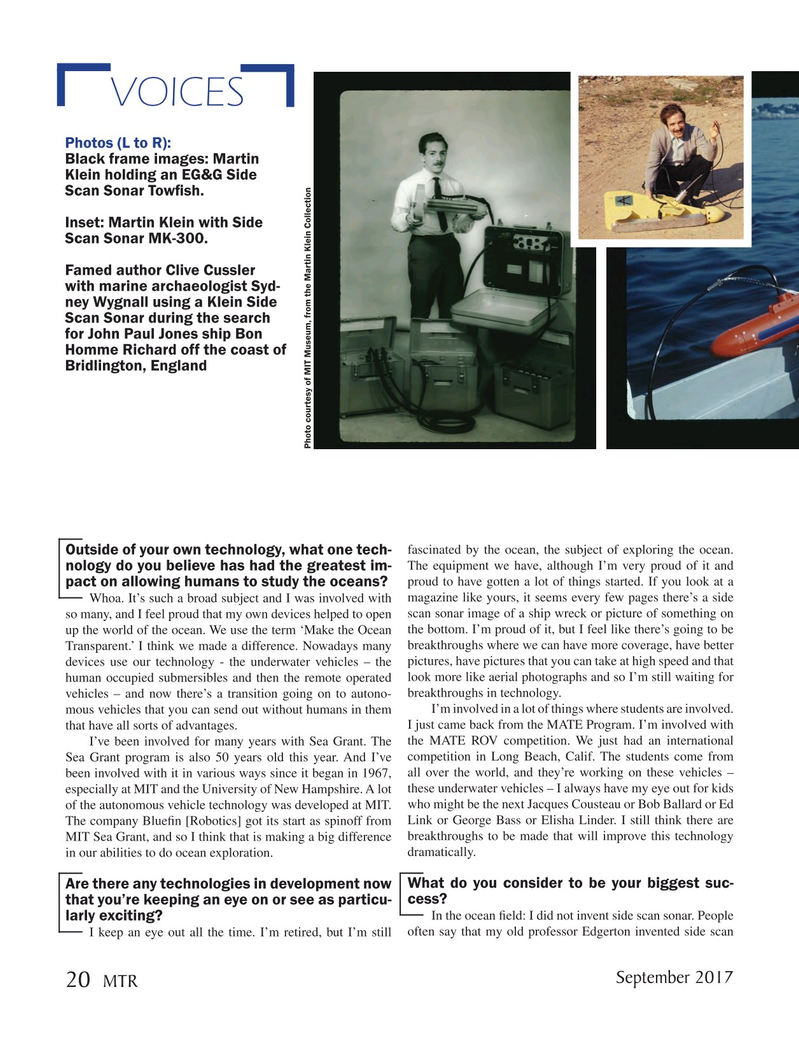
Page 20: of Marine Technology Magazine (September 2017)
Ocean Observation: Gliders, Buoys & Sub-Surface Networks
Read this page in Pdf, Flash or Html5 edition of September 2017 Marine Technology Magazine
VOICES
Photos (L to R):
Black frame images: Martin
Klein holding an EG&G Side
Scan Sonar Tow? sh.
Inset: Martin Klein with Side
Scan Sonar MK-300.
Famed author Clive Cussler with marine archaeologist Syd- ney Wygnall using a Klein Side
Scan Sonar during the search for John Paul Jones ship Bon
Homme Richard off the coast of
Bridlington, England
Photo courtesy of MIT Museum, from the Martin Klein Collection fascinated by the ocean, the subject of exploring the ocean.
Outside of your own technology, what one tech-
The equipment we have, although I’m very proud of it and nology do you believe has had the greatest im- proud to have gotten a lot of things started. If you look at a pact on allowing humans to study the oceans?
Whoa. It’s such a broad subject and I was involved with magazine like yours, it seems every few pages there’s a side so many, and I feel proud that my own devices helped to open scan sonar image of a ship wreck or picture of something on up the world of the ocean. We use the term ‘Make the Ocean the bottom. I’m proud of it, but I feel like there’s going to be
Transparent.’ I think we made a difference. Nowadays many breakthroughs where we can have more coverage, have better devices use our technology - the underwater vehicles – the pictures, have pictures that you can take at high speed and that human occupied submersibles and then the remote operated look more like aerial photographs and so I’m still waiting for vehicles – and now there’s a transition going on to autono- breakthroughs in technology.
mous vehicles that you can send out without humans in them I’m involved in a lot of things where students are involved. that have all sorts of advantages. I just came back from the MATE Program. I’m involved with I’ve been involved for many years with Sea Grant. The the MATE ROV competition. We just had an international
Sea Grant program is also 50 years old this year. And I’ve competition in Long Beach, Calif. The students come from been involved with it in various ways since it began in 1967, all over the world, and they’re working on these vehicles – especially at MIT and the University of New Hampshire. A lot these underwater vehicles – I always have my eye out for kids of the autonomous vehicle technology was developed at MIT. who might be the next Jacques Cousteau or Bob Ballard or Ed
The company Blue

 19
19

 21
21
